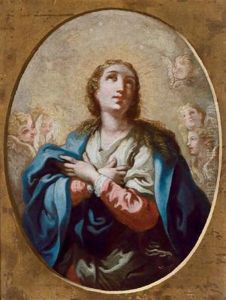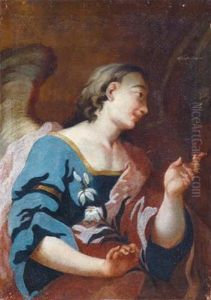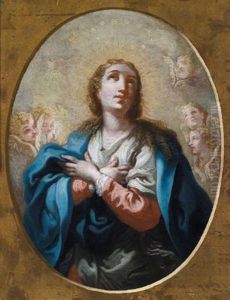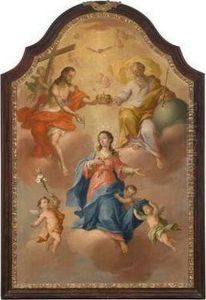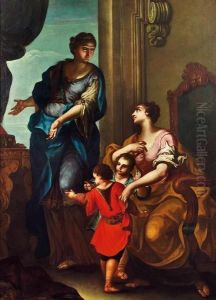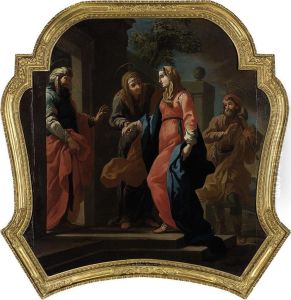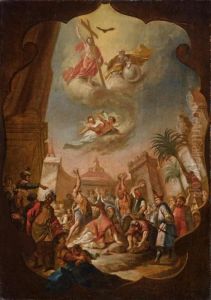Bartholomaus Altomonte Paintings
Bartholomaus Altomonte, also known as Bartholomäus Hohenberg, was an Austrian Baroque painter of Italian descent. He was born on May 24, 1694, in Warsaw, Poland, where his father, Martino Altomonte, also a painter, was active at the court of John III Sobieski. Bartholomaus was part of the Altomonte family of artists, and his work is often associated with the elaborate and decorative style that characterized the late Baroque period.
Bartholomaus received his initial training from his father and later traveled throughout Europe to further his education and experience. He spent time in Rome, which was a crucial center for artistic training at the time, and this experience exposed him to the works of the great Italian masters, influencing his development as an artist. Upon his return to Austria, he settled in the city of Linz and became a prominent painter in the region.
Altomonte's works are known for their vivid colors and intricate details. He specialized in large-scale religious and allegorical frescoes, which were popular in the decoration of churches and palaces during the Baroque era. His paintings often featured dramatic light and shadow effects, a characteristic of Baroque art aimed at evoking emotional responses from viewers.
One of his notable works is the fresco series in the St. Florian Monastery, located near Linz, where he depicted the life of Saint Florian and other religious themes. His work there is considered a masterpiece of Austrian Baroque art and contributes significantly to the monastery's reputation as an artistic center. Altomonte also worked on commissions for various other ecclesiastical buildings, contributing to his fame and success during his lifetime.
Despite his Italian roots, Altomonte's career was primarily based in Austria, and he became an integral part of the Austrian Baroque movement. His influence extended through his students and his son, Franz Altomonte, who also became a painter, though he was more focused on landscape painting.
Bartholomaus Altomonte continued to paint until an advanced age, and his long life allowed him to witness the transition of artistic styles from the high Baroque to the more restrained Rococo and even the early stages of Neoclassicism. He died on May 11, 1783, in Sankt Florian, Austria, leaving behind a rich legacy of Baroque art that continues to be appreciated for its contribution to the cultural heritage of Austria.
